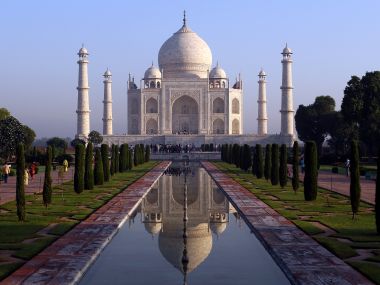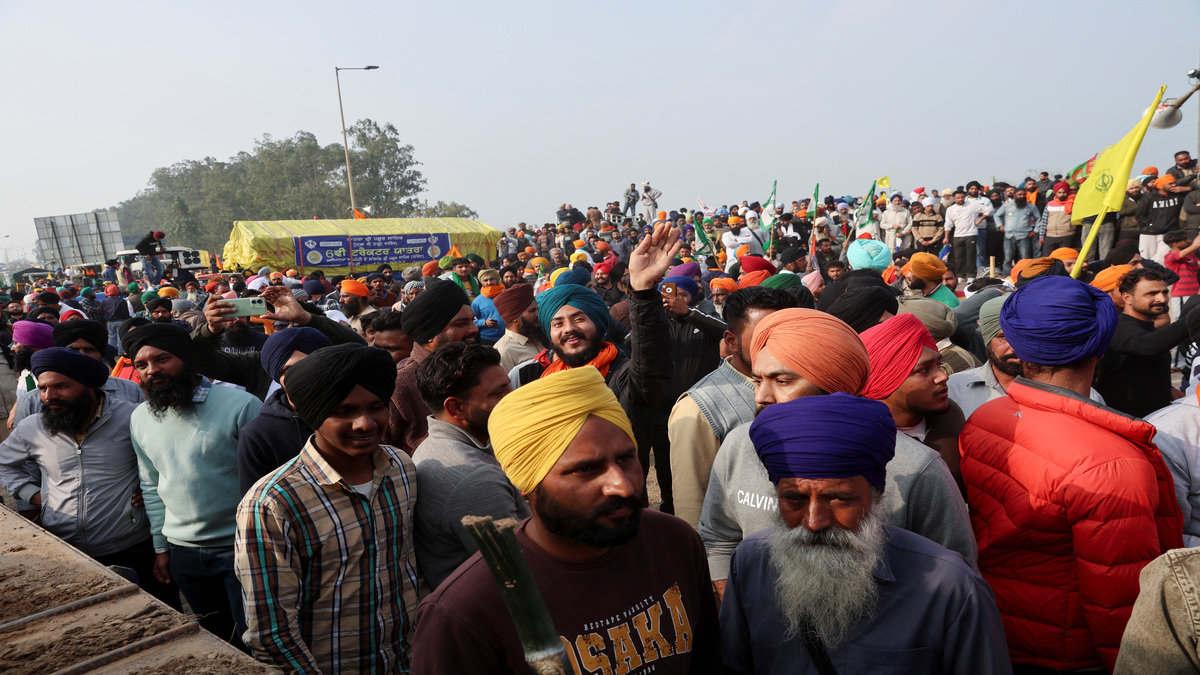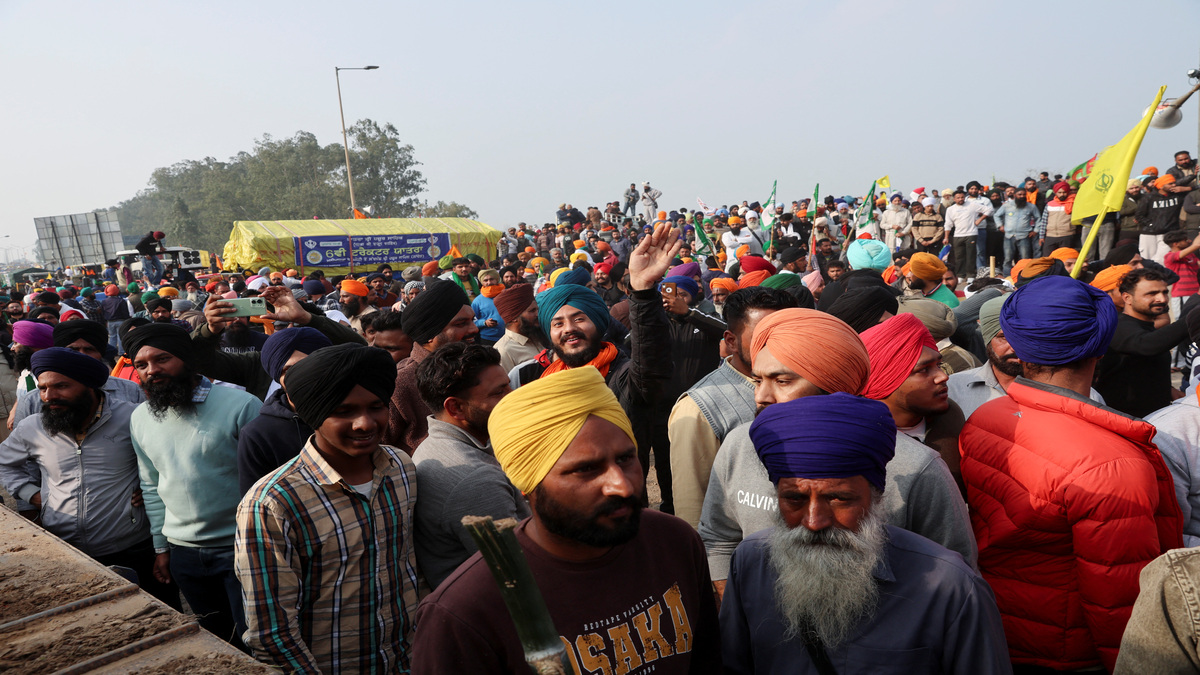There is no doubt that BJP MLA Sangeet Som exposed his poor knowledge of history by describing the Taj Mahal as a “blot on Indian culture”.
In response, Uttar Pradesh chief minister Yogi Adityanath has reiterated his government’s commitment to not only safeguard and preserve one of the “wonders of the world” but also further promote its fame. However, the Yogi’s remark that the Taj Mahal was “built by the blood and sweat of Indian labourers” has both positive and negative connotations.
Let’s look at the positive first: The Taj is the sweet result of the hard labour of the Indian craftsmen and workers. In all probability, the Uttar Pradesh Chief Minister meant what he said.
But now the negative part: The Taj Mahal, like any other wonderful historical edifice anywhere else in the world, is the result of immeasurable pain, suffering and exploitation.
As mature and civilised citizens we all should recognise the bitter reality that behind every beautiful edifice lies an ugly truth.
And the ugly truth is this: Most of our monumental feats of engineering—at least those in the distant past—were built exclusively on the backs of labourers who were criminally exploited.
The Taj Mahal was constructed over 22 years and at a cost of over Rs 70 billion. It was built on the backs of around 22,000 labourers, who were basically slaves. Also, the money spent on the the Taj Mahal was collected from impoverished villagers and shopkeepers in the form of oppressive taxation. Worse, while dismissing the folklore that the right hands of the masons who built Taj Mahal were chopped off on the orders of Shah Jahan—so that they would not be able construct such a fine mausoleum elsewhere—one ignores that it is quite possible that those involved in the construction signed contracts committing themselves to have no part in any similar design in the future.
The construction of Taj Mahal followed what was then an established pattern.
Take the case of Qutub Minar, built by the kings of the Slave Dynasty of Turkish origin in the 12th Century. It has been well established that thousands of slaves, captured in early victories , were conscripted to construct the edifice in the shortest possible time so that the architecture could be projected as a symbol of Muslim political power with which the Turks wished to impress and overawe “the conquered people.” And this was done with the wealth obtained from war and materials acquired from Hindu buildings after destroying them.
Let’s look at other examples around the world: Egypt’s Pyramids of Giza, built between 2551 and 2472 BC, were constructed by lakhs of slaves. A captive people labouring under the scorching sun beneath the stinging whips of the pharaoh’s overseers (as depicted in the Hollywood classic The Ten Commandments). Many died during the construction. Modern archaeologists have discovered graves of pyramid workers whose skeletons show signs of arthritis. That’s how hard they were made to work.
If historian Janet DeLaine is to be believed , during the Roman imperial period, around 12,000 to 20,000 workers were involved in construction at any one time within Rome. These workers included slaves, freed slaves and freeborn citizens who were likely contracted. DeLaine calculated that, on average, 6,000 men worked on the famous Baths of Caracalla (inaugurated in 216 CE) for 12 hours a day for 6 years. Similarly, The Great Wall of China, on which construction begun in 221 BCE, is nicknamed “the longest cemetery on earth” because over 300,000 convicts, slaves, and contracted workers died helping erect this great Wonder of the World.
Viewed in this context, there was nothing communal about the construction of a Taj Mahal or Qutub Minar, as some of our politicians would have us believe. In fact, contemporary Hindu rulers in South and East India were no less cruel.
Take, for instance, the case of another marvel: The Konark Sun Temple near Puri in Odisha. Built in the 13th Century by the Odia king Raja Narsinghdev of the Eastern Ganga Dynasty, 1,200 workers toiled for over 12 years to construct them. All of them were slaves. There was no leave. No days off.
In fact, one famous story goes thus: When chief sculptor Bishu Maharana did not return home, his 12 year-old son Dharmapada, who had not seen the father since his birth, went to visit him. The child found his father highly distressed. You see, the king had threatened to execute all 1,200 craftsmen if they did not finish the placing of the crown on the Sun god’s head by morning. Dharmapada, who mastered the craft at a tender age—by reading the books left by his father at home—single-handedly accomplished the task working by the moonlit night.
Folklore said the craftsmen, fearing that the king would behead them since a child completed the task that they could not, demanded the life of the child. Bishu Maharana strenuously resisted. Dharmaprada, wanting to settle the issue, jumped from the crown he completed into the sea, giving his life to save the others. Whether this story is true or not is besides the point: That the king was on the verge of killing so many innocents.
Another tale: The story of Jatan Nagar in my hometown Dhenkanal, not very far from Konark. About 150 years ago, the local king, kind and popular, went on a foreign trip. He left his wicked younger brother in charge, who wanted a new palace on a nearby hill. The younger brother forced people from all over the kingdom to work as slaves. Many died. Alongside them worked and died hundreds of elephants, who were forced to carry stones and other building materials to the top of the hill. It is said that the younger brother even tortured reluctant workers.
After it was completed, the palace was named Jatan Nagar. The younger brother even beheaded the chief architect. Such was his cruelty! But he could not move in to the palace. The real king returned and banished his brother from the kingdom. The palace is now feared and known as the abode of the ghosts of those who were killed. No one goes near it after the sun sets.
Such exploitation still exists. In 2014, it was widely reported how, on average, a Nepalese migrant died every second day in Qatar, a country which is building world-class stadiums for the 2022 Football World Cup. In fact, along with the hapless Nepalese, quite a few workers from India, Bangladesh and Sri Lanka have died as well. These workers were not exactly slaves, however, they were highly marginalised in every sense of the term, with reports explaining how their wages were withheld, how they worked long hours in heat that exceeded 50 °C, and how their passports were confiscated to ensure their presence in the venues.
Of course, it could be argued that exploitation of labour in some form or the other by the unscrupulous contractors goes on in abundance in metropolitan cities of Delhi and Mumbai even today. But that is not comparable in scale and intensity to what happened during the building of a Qutub Minar, a Taj Mahal or a Konark.
These are magnificent edifices. There’s no doubt about that. They’ve made us Indians proud.
But let’s not credit kings and emperors for building them.
The true acclaim lies with the slaves and peasants who gave their blood, sweat, tears and often their lives to build them.


)




)
)
)
)
)
)
)
)